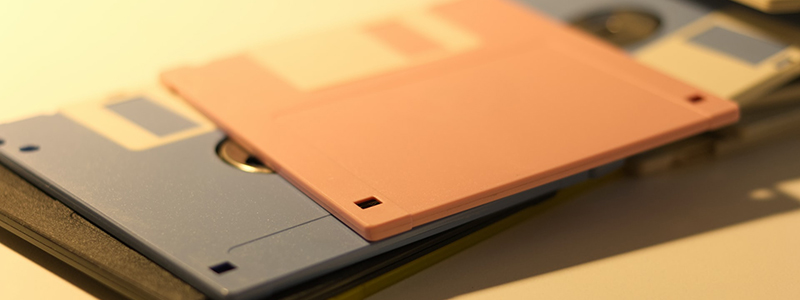
Long before the days of flash drives and external SSDs, floppy disks were the primary way for users to store external media. Floppy disks became popular in 1971 when IBM released the IBM100.
Initially, floppy disks were quite large, with the first models having a size of 8 inches. The storage capacity was also quite abysmal by modern standards, with 80 kilobytes being the total capacity of the initial models. However, they were still far better than any alternative.
By 1986, IBM had developed the floppy disk in its modern form, with a capacity of 1.44 megabytes and a size of 3.5 inches. Eventually, floppy disks would be replaced by flash drives and other external devices. Sony stopped manufacturing floppy disks in 2011, and that was the supposed death of the disk.
However, a small number of people still have floppy disks lying around and wonder whether they are still viable. Here, we take a look at whether that is the case, and how you can access floppy disks if you have them lying around.
What is a Floppy Disk?
First, let’s go through what is a floppy disk. A floppy disk is a small piece of equipment that can be inserted into a floppy disk reader. The disk itself is encoded magnetically. What that means is that there is a read/write head that passes through the disk to access and edit data stored on it.
For decades, almost every single personal computer came with a floppy disk reader built in. Even if it wasn’t built in, you could easily find a reader quite cheaply and install it into one of the slots in the tower.
Eventually, floppy disks were replaced due to the availability of better alternatives. As the size of files grew, users began to switch to external hard drives and other similar media.
Are Floppy Disks Still Viable?
The simplest answer to this question is no. No matter which way you look at it, using a floppy disk is no longer viable. Floppy disks simply do not have enough space, nor are they fast enough, for modern computing standards.
Furthermore, pretty much all modern PCs do not even come with floppy disk drivers. Getting drivers that support modern Operating Systems is also next to impossible. As such, it is pretty much guaranteed that you won’t be able to read floppy disks even if you manage to install an old reader into your PC.
On top of that, since the drives are no longer being produced, it is quite difficult to find floppy drives as well. It is perhaps fitting that there are probably more people using floppy disks as drink coasters than there are using them for data storage nowadays.
Where Floppy Disks Still May Be Useful
Despite considering everything mentioned above, there are still a handful of cases where a floppy disk still could be useful:
- Recovering old files that are stored on floppy disks (although we can’t imagine how old the files would have to be).
- Restoring and backing up data on older systems.
- Updating really old systems with no other compatible I/O.
- As mentioned previously, as coasters or collectible items.
How to Read a Floppy Disk
Luckily, it is still possible to read floppy disks if you have a use for them. However, it is way too difficult to get a proper floppy disk reader installed in your CPU. This is, as mentioned previously, due to the difficulty of finding drivers.
The good news is that you can use an external floppy disk reader. As long as it is a 3.5-inch floppy reader, you should be able to read most floppy disks that are still around. There are a lot of cheaply made floppy disk readers that can be bought on any online store.
The only thing that you need to watch out for is that the reader has good reviews. Once you have the reader, you can connect it to your PC using the USB port. Then, insert the floppy disk into the reader and your PC should be able to read it.
In rare cases, you may need to install a driver for the floppy disk, in which case you will need to read the manual to see how to install them. However, most external floppy disk readers will work right out of the box.
Conclusion
Although floppy disks are no longer viable as a storage device, it is still possible to access old disks that you have lying around. The only thing to remember is that the disks may be damaged due to their age. Unfortunately, there is not a lot you can do in this regard. Hopefully, all the disks that you have lying around do work.
